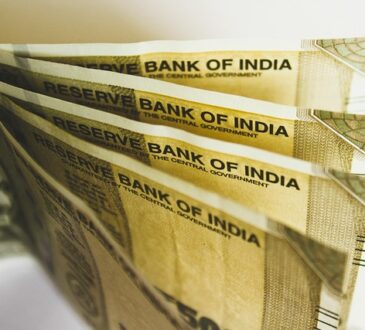
But just when it looked like the dollar was running out of breath, it found its rhythm again. Now trading near the 100 mark, the currency seems to be walking back onto the field, ready to bat big again — with the crowd cheering and momentum swinging in its favour.
So what changed? Let’s break down the innings that helped the dollar stage its comeback.
1. The Fed’s New Game Plan: Powell Holds the Line
Just when markets were expecting another rate cut to keep the ball rolling, Federal Reserve Chair Jerome Powell changed the field setting.
In the last Fed meeting, after delivering a 25 bps cut, Powell surprised everyone by suggesting that another cut in December was “far from a done deal.” He hinted that the Fed might already be close to “neutral” after trimming rates by 150 basis points.
Powell pointed out that the economy’s slowdown isn’t because demand is falling — it’s because fewer people are joining the workforce. With tighter immigration, early retirements, and fewer young job seekers, the U.S. labour market’s weakness is more about supply than demand. And rate cuts, which mostly boost demand, can’t fix that.
He also flagged the government shutdown, diverging opinions within the Fed, and stubbornly high inflation — all reasons to pause and reassess.
Markets took note. The probability of another December cut fell sharply from 92% to 65%, and the dollar immediately gained traction, bouncing above 99.50.
2. Tariff Uncertainties: From Chaos to Calm
Earlier this year, the dollar was weighed down by Trump’s trade curveballs. Every other week, a new tariff announcement or threat would send global markets ducking for cover. Businesses, unsure of what was coming next, hesitated to invest — and that nervousness kept the dollar pinned.
But now, that storm seems to be easing. The U.S. has struck fresh trade agreements and reopened talks with several countries, restoring some order to what had become a messy game.
The biggest breakthrough came on November 1, when President Trump and China’s President Xi Jinping reached a major trade and economic agreement. The deal promised tariff relief, better market access, and solutions to long-standing disputes — especially on export controls and farm trade.
The news landed like a long-awaited boundary after a tense over — investors cheered, confidence returned, and the dollar found the momentum it had been waiting for.
Also read: Tata Motors Commercial Vehicles shares debut at 28% premium. Should investors stay on board?
3. The Shutdown’s Twist: Scarcity Makes the Dollar Shine
Here’s the funny thing — even a government shutdown, which sounds terrible on paper, can sometimes help the dollar in the short run.
When federal spending grinds to a halt, fewer dollars move through the economy. Salaries get delayed, contracts stall, and fiscal injections freeze. In other words — there’s less dollar supply. Combine that with global investors running to the dollar as a safe haven during political uncertainty, and suddenly, you’ve got a currency that’s scarce and in demand.
It’s a classic case of paradox economics — when things go wrong, the dollar often rallies first, even if the long-term outlook remains foggy.
4. Rivals Stumble — and the Dollar Capitalises
The Dollar Index (DXY) doesn’t move alone. It’s an index that measures the dollar’s performance against six major currencies — and three of them (the euro, yen, and pound) make up more than 80% of the total weight. Right now, all three look like they’re struggling to hold the crease.
JPY:
Japan’s currency story hasn’t changed much — the yen remains on the back foot. Despite inflation staying above the 2% target for quite some time, the Bank of Japan (BoJ) has kept its policy rate steady at 0.5% for six straight meetings, choosing patience over policy tightening.
Politics, too, has played its part. The election of Prime Minister Sanae Takaichi, known for her preference for looser fiscal policy and closer coordination with the BoJ, has reinforced expectations that Japan’s shift toward higher rates will be slow. Markets took note — the yen slid over 2% against the dollar right after her victory.
Add to this the wide interest rate gap between Japan and the U.S. — roughly 230–250 basis points — and investors have even more reason to move money toward higher-yielding American assets.
Also Read | Mutual fund SIP inflows inch up 1% to Rs 29,529 crore in October
GBP:
The British pound, meanwhile, is reeling under its own pressure. Finance Minister Rachel Reeves’ talk of “hard choices” — widely read as tax hikes and tighter public spending — has cast a shadow over growth ahead of the November budget. The idea is simple: higher taxes can cool economic activity, leaving less room for businesses and consumers to spend. And when growth slows, central banks often step in to provide support — in this case, through possible rate cuts.
Markets have caught on to that logic, now pricing a 40% chance of a BoE rate cut, which has pushed sterling to its weakest level since April. At the same time, Gilt yields have tumbled, reflecting expectations of both fiscal tightening and monetary easing ahead. Together, softer inflation, falling bond yields, and fiscal restraint have clipped the pound’s wings, keeping it under pressure in the near term.
EUR:
The eurozone economy seems to be batting on a slow pitch — holding steady but lacking momentum.
A recent ECB survey (31 October 2025) showed inflation expected to stay near the 2% target, giving the central bank room to cut rates if growth weakens further. With rates unchanged for three meetings, markets are now eyeing a possible rate cut in December.
On the factory front, the Manufacturing PMI (Purchasing Managers’ Index) — which tracks business activity — came in at 50.0 for October, the exact line between growth and contraction. While output rose modestly, new orders stalled, exports fell, and jobs were cut. Even Germany and France remain in contraction, with PMIs below 50.
All in all, the eurozone looks stuck in a cautious phase — weak demand, soft confidence, and talk of rate cuts have left the euro struggling to hold its ground against the dollar.
EUR/USD Outlook
 ET Bureau & Agencies
ET Bureau & AgenciesThe euro has slipped below a key upward trendline, suggesting that bearish momentum is starting to build. This breakdown indicates that the bullish phase seen earlier in 2025 has likely ended. While a brief rebound toward 1.1550–1.1600 cannot be ruled out, such moves are likely to attract selling interest as long as the broader structure stays weak. The pair now looks set to test its first major support near 1.1400, which marks an important previous base. If that level gives way, the next downside zone lies around 1.1050–1.1100, close to the 200-day moving average.
Until the euro climbs back above the broken trendline, any short-term rebounds are expected to face resistance, keeping the near-term outlook bearish.
Together, the euro, pound, and yen’s weakness is like watching the opposition drop three easy catches — the dollar didn’t have to do much; it just stayed on the pitch.
DXY Outlook: A Century in Sight
With the DXY hovering near 100, the dollar looks ready to score a century — backed by Powell’s cautious stance, calmer trade relations, and weaker rivals.
 ET Bureau & Agencies
ET Bureau & AgenciesAdding to the momentum, the U.S. Dollar Index has closed above the 200-day EMA for the first time in months, confirming a bullish breakout. Support lies at 99.20–99.40, and holding above this zone keeps the trend positive. If upcoming U.S. data stay firm, the DXY could test 101–101.50, with potential to extend toward 102.
(The author Amit Pabari is MD, CR Forex Advisors)
(Disclaimer: Recommendations, suggestions, views, and opinions given by the experts are their own. These do not represent the views of The Economic Times.)





